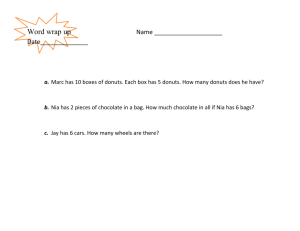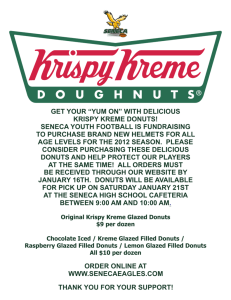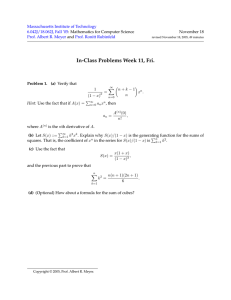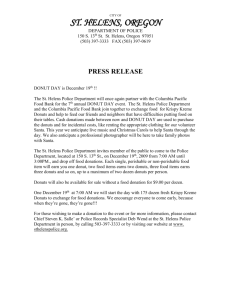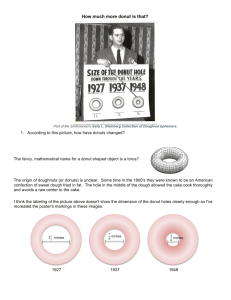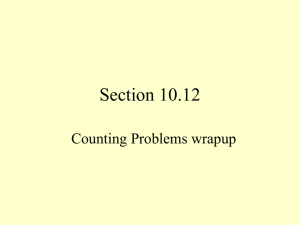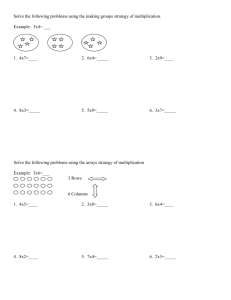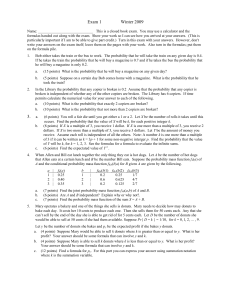Why do prices change?
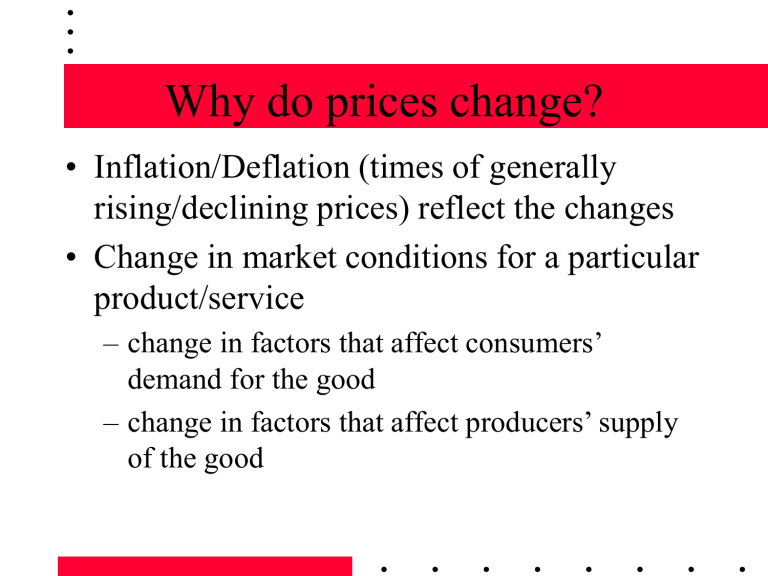
Why do prices change?
• Inflation/Deflation (times of generally rising/declining prices) reflect the changes
• Change in market conditions for a particular product/service
– change in factors that affect consumers’ demand for the good
– change in factors that affect producers’ supply of the good
Consumer Demand
• Households get less satisfaction from later units of a product/service than they get from earlier units -diminishing marginal utility (declining marginal value)
– why the first run of the season down the ski slope is more exciting than the second
– why the second donut doesn’t taste as good as the first
• Implies that consumers are only willing to buy more of a good if the price declines
Consumer Demand (cont.)
•
Demand Curve - depicts the relationship between the price of the product and the quantity of the product that consumers will purchase.
• For this class, Demand Curves will always have a negative slope
Price/donut
1.2
1
0.8
0.6
0.4
0.2
0
1
Demand for Donuts
2 6
Quantity of Donuts (in 1,000’s)
12
D
1
What affects the shape/position of the demand curve?
•
Household income
– as income rises families increase their demand for
“normal” goods and decrease their demand for
“inferior” goods
•
Household preferences
– some people don’t like to eat sweet things in the morning while others do
• The availability and price of substitutes
– e.g., bagels vs. donuts
• The availability and price of complements
– e.g., coffee and donuts
Defining Terms
•
Normal Goods : a good for which consumption increases as an individual’s income rises.
•
Inferior Goods : a good for which consumption decreases as an individual’s income rises
Producer Supply
• Producers’ willingness to provide a product or service is dependent on the price they can get for the good/service in the market…
– the higher the price, the more they are willing to produce
• Producers’ supply is a positive function of price
• For this class, Supply Curves will always have a positive slope
Price/donut
1.2
1
0.8
0.6
0.4
0.2
0
1
Supply of Donuts
2 6
Quantity of Donuts (in 1,000’s)
12
S
1
What affects the shape of the supply curve?
• Production technology
– e.g., must donuts be made by hand or can a machine do it?
•
Cost of inputs (a.k.a Input Costs)
– e.g., price of labor, machines, space
Supply & Demand Intersect to
Determine Market Price
Price/donut
1.2
1
P
1
0.8
0.6
0.4
0.2
0
E
1
S
1
1 2 6
Q
1
Quantity of Donuts (in 1,000’s)
12
D
1
Let’s draw some curves!
• How does an income increase affect demand for a normal good?
• How does an income decrease affect demand for a normal good?
• How does an income increase affect demand for an inferior good?
• How does an income decrease affect demand for an inferior good?
Examples...
• Oprah Effect: Households become aware of the perceived negative health consequences of eating beef
• shifts demand to the left and the market price for beef declines.
• ABC Factory moves it’s manufacturing plant to
Veracruz, Mexico. What will happen to the price of ABC’s products?
• shifts supply to the right and the market price for
ABC’s products decrease.
Examples...
• California has the best strawberry crop in years.
What will happen to the price of chocolate and whipped cream?
• May shift demand for chocolate and whipped cream to the
– right (increasing both equilibrium quantity and price).
• Strike of union workers may
• raise employee costs and shift supply curve to the left (raising equilibrium price and decreasing quantity).
